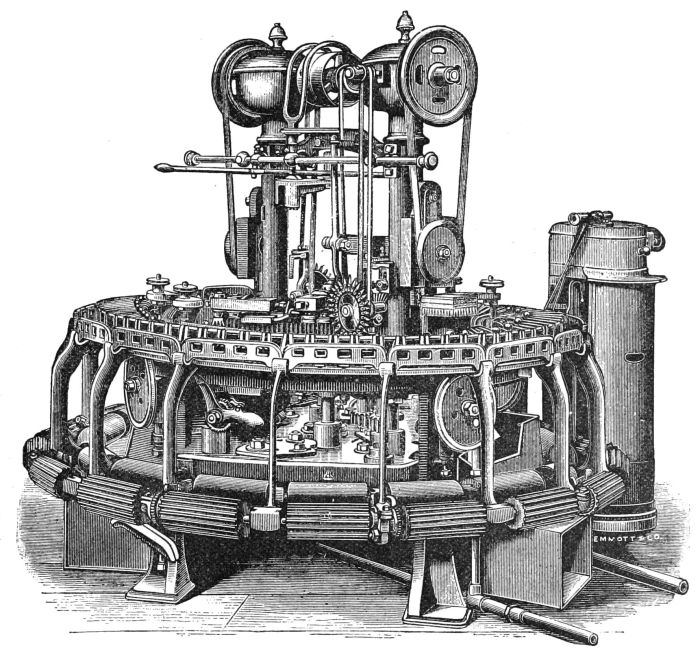
Our ambitions run high and low – for a creation myth made real, for a monstrous act of self love. As soon as it was feasible, we had no choice, but to follow our desires and hang the consequences.
Ian McEwan, Machines Like Me
I know what you’re thinking – not yet another post on ChatGPT! Haven’t enough words been written (or machine-generated) on this topic in the last few months to make the addition of any more completely unnecessary? What else is there to possibly say?
Well, we’ll see.
First, just in case you have been living in a cave in North Korea for the last year, what is ChatGPT? Let’s ask it…
ChatGPT is an AI language model developed by OpenAI. It is based on the GPT (Generative Pre-trained Transformer) architecture, specifically GPT-3.5. GPT-3.5 is a deep learning model that has been trained on a diverse range of internet text to generate human-like responses to text prompts.
ChatGPT response to the question: “What is ChatGPT”.
In this post, I am not interested in what use cases ChatGPT is or is not good for. I’m not even particularly interested in what jobs ChatGPT is going to replace in the coming years. Let’s face it, if the CEO of IBM, Arvind Krishna, is saying “I could easily see 30 per cent of [non-customer-facing roles] getting replaced by AI and automation over a five-year period” then many people are already going to be worried so I’m not going to add to those fears.
I see much of what Krishna predicts as inevitable. Unless the world takes note of the recent letter from the tech/AI ‘great and the good’ (which appears to have some fake signatories anyway) then the simple fact is that if you can algorithmically capture a solution to a problem, people who solve those problems for a living are probably going to get replaced by such algorithms.
What interests me is whether deep learning models like ChatGPT really are intelligent and, more significantly, are they creative. In this post I’ll consider intelligence and in a later post creativity.
It turns out that intelligence is actually quite a hard thing to define. As Max Tegmark, president of the Future of Life Institute, says: “there’s no agreement on what intelligence is even amongst intelligent intelligence researchers!” Helpfully however, in his book Life 3.0, Tegmark puts us out of our misery and defines intelligence as the: “ability to accomplish complex goals”. This, as even Tegmark acknowledges, is a very broad definition. He also claims this definition subsumes the ability to “apply knowledge and skills” as this could be a goal one sets oneself.
Having defined intelligence it then becomes relatively easy, for Tegmark at least, to define artificial intelligence (AI) as: “non biological intelligence”; general intelligence as the: “ability to accomplish virtually any goal, including learning”; artificial general intelligence (AGI) as the: “ability to accomplish any cognitive task at least as well as humans” and superintelligence as: “general intelligence far beyond human level”.
So, given the relatively low bar that these definitions are set at, where would we say ChatGPT and its ilk are currently at on the intelligence scale?
I guess this really hinges on whether you think the multitude of tasks that these deep learning models can perform constitutes “accomplishing virtually any goal” or not? For many people (especially as we’ll see, AI researchers) the answer is probably yes.
But let’s ask ChatGPT if it thinks it’s an AGI?
It is important to note that as an AI language model, I am an instantiation of artificial general intelligence (AGI) and can provide insights based on my training up until September 2021.
Partial ChatGPT response to the question: “Given Max Tegmark’s definition of intelligence where would you say you are on the various intelligence levels he proposes?”.
Personally, and up until a few weeks ago, I would have said ChatGPT was getting a bit above itself to say it was an “instantiation” of an AGI but then I read an interview with Jaron Lanier titled How humanity can defeat AI.
Lanier works for Microsoft and is the author of a number of what you might call anti-social media books including You Are Not A Gadget and Ten Arguments For Deleting Your Social Media Accounts Right Now.
Lanier’s argument in this interview is that we have got AI wrong and we should not be treating it as a new form of intelligence at all. Indeed he has previously stated there is no AI. Instead Lanier reckons we have built a new and “innovative form of social collaboration”. Like the other social collaboration platforms that Lanier has argued we should all leave because they have gone horribly wrong this new form too could become perilous in nature if we don’t design it well. In Lanier’s view therefore the sooner we understand there is no such thing as AI, the sooner we’ll start managing our new technology intelligently and learn how to use it as a collaboration tool.
Whilst all of the above is well intentioned the real insightful moment for me came when Lanier was discussing Alan Turing’s famous test for intelligence. Let me quote directly what Lanier says.
You’ve probably heard of the Turing test, which was one of the original thought-experiments about artificial intelligence. There’s this idea that if a human judge can’t distinguish whether something came from a person or computer, then we should treat the computer as having equal rights. And the problem with that is that it’s also possible that the judge became stupid. There’s no guarantee that it wasn’t the judge who changed rather than the computer. The problem with treating the output of GPT as if it’s an alien intelligence, which many people enjoy doing, is that you can’t tell whether the humans are letting go of their own standards and becoming stupid to make the machine seem smart.
Jaron Lanier, How humanity can defeat AI, UnHerd, May 8th 2023
There is no doubt that we are in great danger of believing whatever bullshit GPT’s generate. The past decade or so of social media growth has illustrated just how difficult we humans find it to handle misinformation and these new and wondrous machines are only going to make that task even harder. This, coupled with the problem that our education system seems to reward the regurgitation of facts rather than developing critical thinking skills is, as journalist Kenan Malik says, increasingly going to become more of an issue as we try to figure out what is fake and what is true.
Interestingly, around the time Lanier was saying “there is no AI”, the so called “godfather of AI”, Geoffrey Hinton was announcing he was leaving Google because he was worried that AI could become “more intelligent than humans and could be exploited by ‘bad actors'”. Clearly, as someone who created the early neural networks that were the predecessors to the large language models GPTs are built on Hinton could not be described as being “stupid”, so what is going on here? Like others before him who think AI might be exhibiting signs of becoming sentient, maybe Hinton is being deceived by the very monster he has helped create.
So what to do?
Helpfully Max Tegmark, somewhat tongue-in-cheek, has suggested the following rules for developing AI (my comments are in italics):
- Don’t teach it to code: this facilitates recursive self-improvement – ChatGPT can already code.
- Don’t connect it to the internet: let it learn only the minimum needed to help us, not how to manipulate us or gain power – ChatGPT certainly connected to the internet to learn what it already knows.
- Don’t give it a public API: prevent nefarious actors from using it within their code – OpenAI is releasing a public API.
- Don’t start an arms race: this incentivizes everyone to prioritize development speed over safety – I think it’s safe to say there is already an AI arms race between the US and China.
Oh dear, it’s not going well is it?
So what should we really do?
I think Lanier is right. Like many technologies that have gone before, AI is seducing us into believing it is something it is not – even, it seems, to its creators. Intelligent it may well be, at least by Max Tegmark’s very broad definition of what intelligence is, but let’s not get beyond ourselves. Whilst I agree (and definitely fear) AI could be exploited by bad actors it is still, at a fundamental level, little more than a gargantuan mash up machine that is regurgitating the work of the people who have written the text and created the images it spits out. These mash ups may be fooling many of us some of the time (myself included) but we must be not be fooled into losing our critical thought processes here.
As Ian McEwan points out, we must be careful we don’t “follow our desires and hang the consequences”.

[…] both sides of this discussion have good valid arguments for and against AI, as discussed in the first of these posts, what I am more interested in is not whether we are about to be wiped out by AI but […]